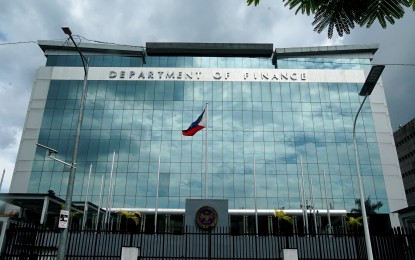RURAL BANK OF STA. ROSA REPORTS INCOME INCREASE
The Rural Bank of Sta. Rosa (Laguna), Inc. realized a significant increase in its net income for the January-September period this year.
Rural Bank of Sta. Rosa Chairman and financial technology firm Salmon co-founder Raffy Montemayor on Nov. 22 said that the total net income during the period amounted to P166.7 million from $1.7 million in the same period last year.
The bank’s total loan portfolio likewise rose to P798.8 million from last year’s P67.5 million, while total deposits increased to P522.1 million from P77.5 million.
“This increase in net income we’re going to be re-injecting to the bank as we invest in new technologies and new people,” Montemayor said.
“The financial position of the bank is really good. We’re growing it profitably and sustainably which will allow us to inject more technology which will allow us to inject more people, put everything in place so that we can really scale up the business and scale up the bank itself and hopefully progress its license over time,” he added.
A NUMBER OF PLAYERS SEEK DIGITAL BANK LICENSE
There are new players and existing banks interested in securing a license to operate as digital banks, according to the Bangko Sentral ng Pilipinas (BSP) on Nov. 21.
“There are new players that are exploring and are interested to enter the Philippine market, but based on our issuance, we will only start accepting new applicants by January 1, 2025,” BSP Senior Director for Technology Risk & Innovation Supervision Melchor Plabasan said on the sidelines of the 2024 BSP-International Monetary Fund Systemic Risk Dialogue.
Plabasan added the BSP is also determining which among the digicentric institutions now can be considered as operating like a digital bank.
“So we can also transition their license from, let’s say rural bank or thrift bank, to digital bank. Because if you’re already behaving like a digital bank, you should be regulated like a digital bank, not a rural bank. That’s why the intention really is to minimize the arbitrage,” he added.
PEZA ON TRACK TO REACH P200B INVESTMENT TARGET
The Philippine Economic Zone Authority (PEZA) is on track to attain its P200-billion investment target for this year as investment approvals has reached P186.09 billion as of Nov. 13.
PEZA said on Nov. 20 said the amount has already surpassed the P175.71 billion full-year 2023 investment approvals, and was also higher by 32% from the P140.884-billion investments in the same period last year.
From Jan. 1 to Nov. 13, the PEZA Board approved 222 new and expansion projects which are projected to generate more than $3 billion in exports, and create 60,000 direct jobs.
Included in the approved projects were four big-ticket locator projects worth P60.24 billion, and one domestic market enterprise with P50 billion investments.
BSP SEES POSSIBLE RATE CUT IN DECEMBER
The Bangko Sentral ng Pilipinas (BSP) said on Nov. 19 that another policy rate cut is possible next month or during the Monetary Board’s next meeting in 2025.
“We’re still in the easing cycle. Either we cut in December or we cut in the next meeting, pero dahan dahan lang (but gradually),” BSP Governor Eli Remolona said on the sidelines of the 2024 BSP-International Monetary Fund (IMF) Systemic Risk Dialogue in Mactan, Cebu.
Remolona, however, did not rule out the possibility of a pause in the easing cycle.
The Monetary Board of the BSP has so far cut key interest rates by a total of 50 basis points (bps) this year.
This brings the target reverse repurchase rate to 6% and the overnight deposit and lending facilities rate to 5.50% and 6.50%, respectively.
Remolona said that if the Monetary Board decides to cut, it will be by another 25 bps.
“The next number to expect ang November inflation number… The next number to expect is the November inflation number… let’s see what that is. Our expectation is it is still within the target band for November,” he said partly in Filipino.
DOF LED NEGOTIATIONS FOR SCALED-UP CLIMATE FINANCING
The Philippines, through the Department of Finance (DOF), led negotiations for scaled-up climate finance flows to vulnerable and poor nations during the 29th Conference of the Parties to the United Nations Framework Convention on Climate Change (COP 29) in Baku, Azerbaijan.
The DOF said on Nov. 18 that it pushed for an initial climate finance target of $1.3 trillion annually from developed countries for adaptation, mitigation, and loss and damage that are aligned with the urgent needs of developing nations.
“We have been given an unmissable opportunity to shore up the global climate finance war chest, which for many vulnerable countries is a matter of life and death. That is why here at COP29, the Philippines is aggressively pushing for bold actions and sustained, increased financing once and for all for countries that are perpetually on the frontlines of catastrophic typhoons,” said DOF Undersecretary Maria Luwalhati Dorotan Tiuseco.
However, the climate finance target arrived at was $300 billion annually from 2035, which many poor nations saw as inadequate.
Related
Discover more from Current PH
Subscribe to get the latest posts sent to your email.

